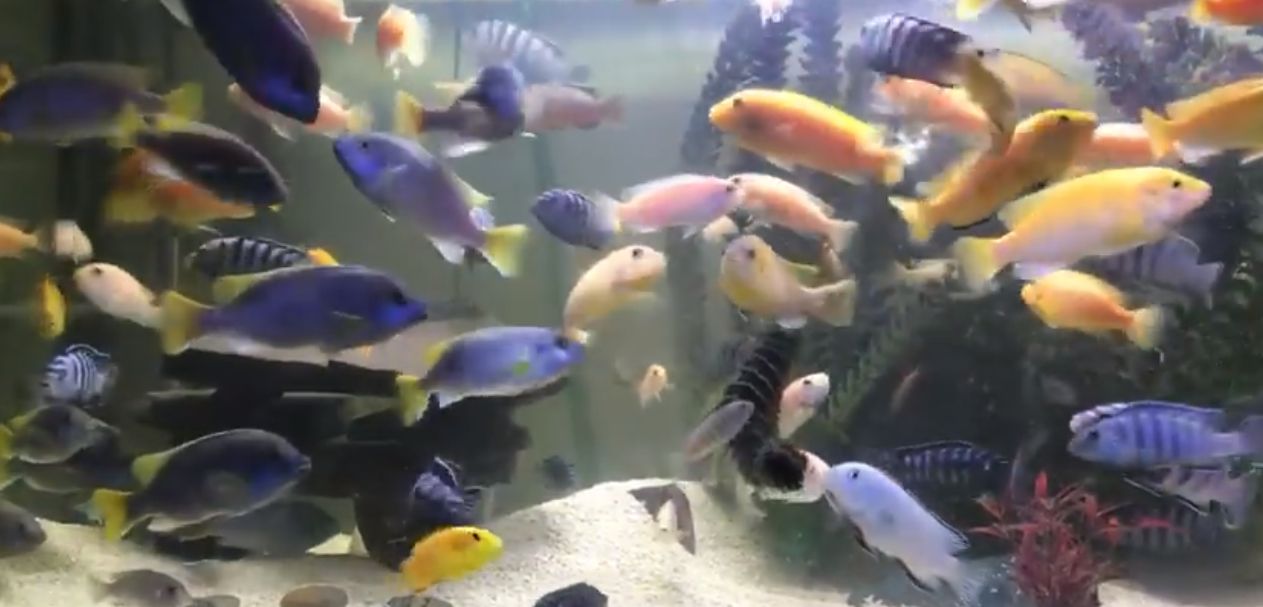
Diseases are generally not a problem in aquariums which have over-filtered, crystal clear, bacteria-free water.
.
The Key to Good Fish Health is Clean, Clear, Bacteria Free Water
.
Note this does not mean water which is changed frequently. The idea that water changes create good health is a myth. The idea that water which has “good water parameters” will give good health is also a myth.
We go into this in much greater detail in this article:
12.9. Avoiding Fish Diseases

Bacteria in the Water Column
The fish’s immune system is constantly fighting all the bacteria that the gills are exposed to regardless of the type of bacteria. So a lower bacterial count means more immune system resources available for fighting off pathogens. A high bacteria concentration will compromise the immune systems of the fish and can cause any number of diseases and pathogen breakouts. The easiest way to determine the amount of bacteria in the water is by water clarity. In general, the clearer the water, the fewer bacteria. All owners of aquariums should strive for crystal-clear water.
Note that “bacteria-free” is relative. It is all on a logarithmic scale. A milliliter (or cubic centimeter) of dull, “normal” aquarium water will have roughly ten million or 107 bacteria. A milliliter of cloudy water can easily have ten billion or 1010 bacteria. And a milliliter of “crystal clear” water can have as little as 100,000, or 105 bacteria in it. This means that cloudy water has 100,000 times more bacteria in it than does crystal clear water. This gives one an idea as to why reducing the bacterial count can be so effective in improving the immune systems of the fish.
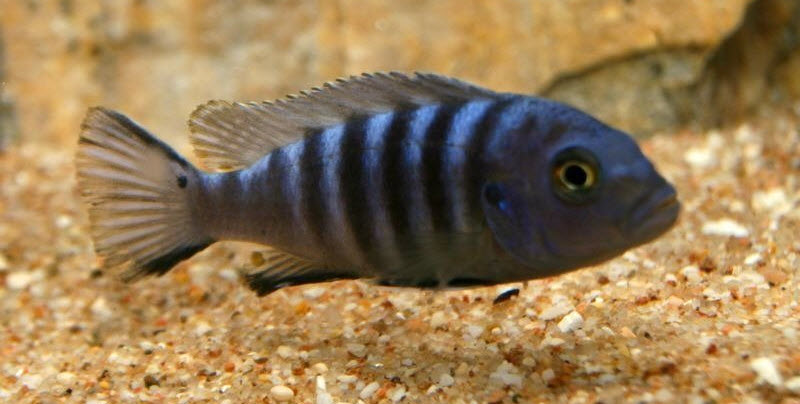
If the bacteria count in the water column is low the fish can put all their immune system resource towards keeping pathogens at bay. So fish in bacteria-free water is far more healthy than fish in bacteria-laden water. This is simply the best disease preventative there is.
Note that, contrary to popular myth, this does NOT mean water which is changed frequently. This is because of the logarithmic nature of bacteria numbers. Going from a billion bacteria to half a billion bacteria with a 50% water change isn’t going to be that much help to the fish. Using over-filtration to go from a billion to a million bacteria will help a lot. Large water changes cannot compensate for poor filtration.
Further analysis of this bacteria can be found at this link:
4.3. Bacteria in the Water Column
.
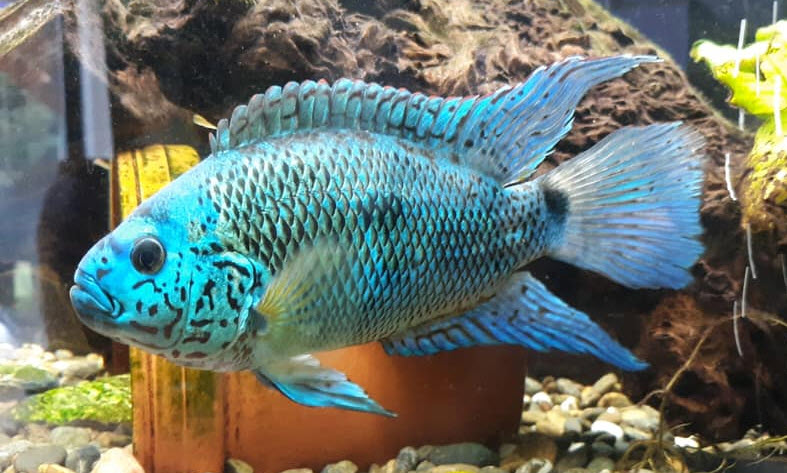
Myths About Diseases
There are many myths parroted on social media about diseases. Here are just a few of them:
- Testing water parameters is essential to diagnosing fish diseases.
- Fish absorb medicines through their skin and gills.
- Freshwater fish drink the water they swim in so putting medicine into the water gets the medicine into the fish.
- The use of “chemicals” such as copper, metronidazole, praziquantel, and antibiotics to treat fish diseases should be avoided as they will probably kill the fish.
- Salt (sodium chloride) added to the aquarium assists in the healing of injuries, promotes the formation of slime coating, improves gill function, and kills some parasites.
- Using antibiotics in the home aquarium will result in antibiotic-resistant bacteria.
- Frequent water changes help cure fish diseases.
- Ich is a horrible disease that will kill most of the fish infected with it.
- “White-eyes” is due to water quality issues.
- If fish get red blotches on their skin and fins in an aquarium it is generally something called “ammonia burn”, not bacterial hemorrhagic septicemia.
- Herbal, “organic” and “natural” remedies (Melafix, Pimafix, Garlic) are effective treatments for fish that are diseased.
.
These myths are ALL false.
.
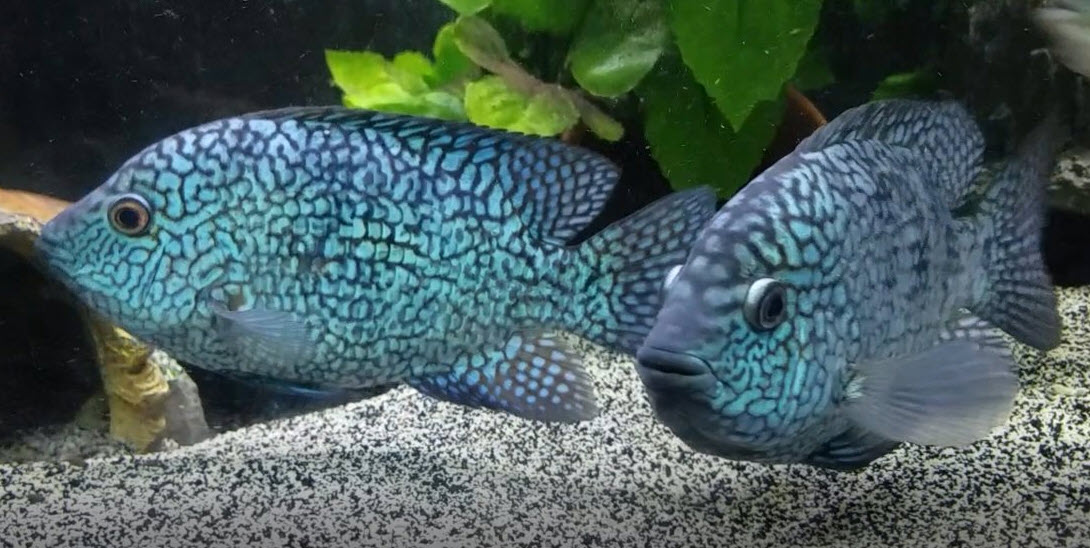
Diagnosing Fish Diseases is VERY Difficult
One caution about diagnosing fish diseases. Even with a microscopic examination fish diseases are not easy to diagnose. Most hobbyists have only what their eyes tell them to go on as to what any fish disease is. This means that diagnosis of any fish disease is simply a “best guess”. And these “best guesses” are frequently wrong. So keep this in mind in all the following disease articles.
If one has a disease break out, these chapters can hopefully help:
10.1. Diseases in General
10.2. External Protozoans
10.2.2. Ich
10.2.3. Velvet
10.2.4. Epistylis
10.2.5. Chilodonella and Costia
10.2.6. Tetrahymena
10.2.7. Cryptobia

10.3. Bacterial Diseases
10.3.1. Skin Ulcers
10.3.2. Mouth Rot
10.3.3. Duck Lips
10.3.4. Fin Rot
10.3.5. Saddleback
10.3.6. Red Blotches
10.3.7. White Eyes
10.3.8. Pop Eyes
10.3.9. Red Gills
10.3.10. Red Mouth in Goldfish
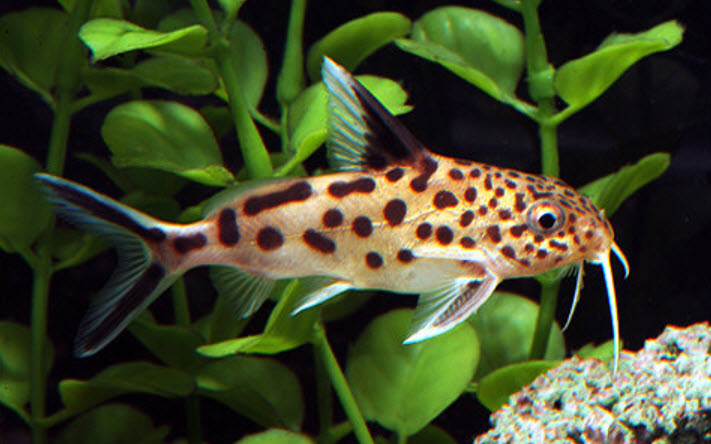
10.4. Tuberculosis (Fish TB)
10.5. Hexamita
10.6. Flukes
10.7. Fish Saprolegnia or “Fungus”
10.8. Lymphocystis
10.9. Anchor Worms
10.10. Black Spot
10.11. Tapeworms
10.12. Nematodes
10.12.1. Camallanus
10.12.2. Capillaria
10.13. Pests in the Aquarium
10.14. Fish Lice
10.15. Dwarf Gourami Disease
10.16. Graphite Disease in Bettas
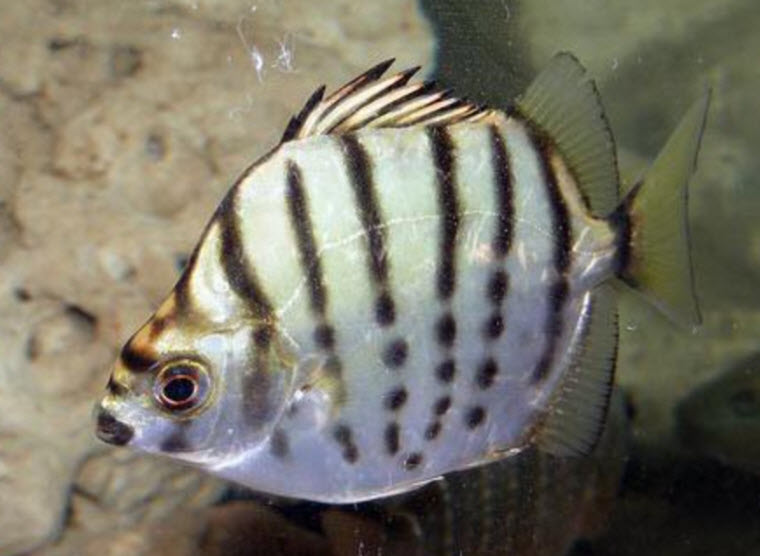
Some general articles will be useful when treating any fish disease:
12.1. Basics of Treatment
12.2. Various Treatments Summarized
12.3. Quarantine Tanks
12.4. Ineffective Medications
12.5. Fish Don’t Drink
12.6. Sterilization
12.7. Making Medicated Food
12.8. Euthanizing a Fish
12.9. Avoiding Fish Diseases
12.10. The “Shotgun” Approach
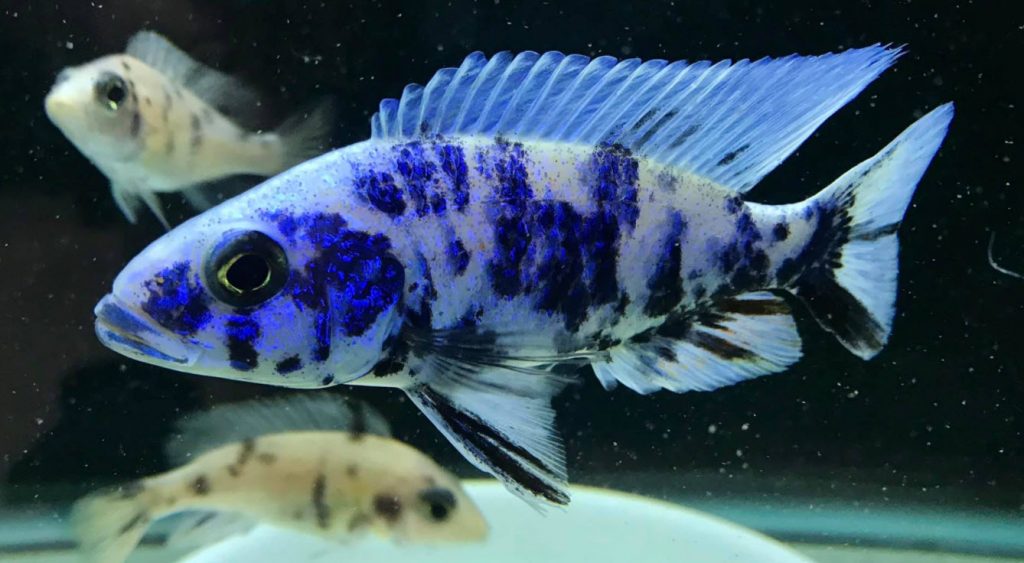
This is in addition to a chapter on symptoms. These articles are as follows:
11.1. Hole-in-the-head Syndrome
11.2. Stringy White Poop
11.3. Malawi Bloat
11.4. Dropsy
11.5. Hollow Belly
11.6. Swim Bladder Disease
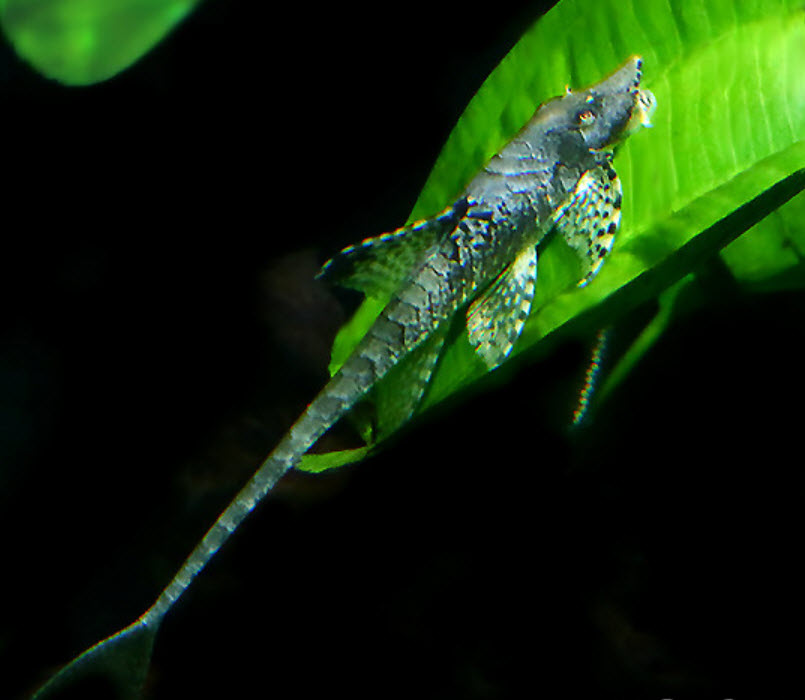
11.7. Shimmying
11.8. Twirling
11.9. Spinal Deformities
11.10. White Skin Blotches
11.11. Red Skin Blotches
11.12. Neon Tetra Disease
11.13. Slime Coat Disease
11.14. Scaly Skin
11.15. Fish Not Eating
11.16. Aggression
11.17. Black Death
11.18. Black Head Syndrome

.
Return to Home Page and Main Menu
.
Aquarium Science Website
The chapters listed below or on the right side in maroon lead to close to 400 articles on all aspects of keeping a freshwater aquarium. These articles have NO links to profit-making sites and are thus unbiased in their recommendations, unlike all the for-profit sites you will find with Google. Bookmark and browse!
.

Dave says
In reply to Doreen…….No need for photos. “Laying down” and “blacks spots by the gills” can be almost anything. You have little choice but to just wait it out. Keep feeding medicated food.
DOREEN SIMONSON says
Hello again Dave
My large angel is still in the hospital tank and is still laying on the bottom. All the spots are now off of him and he does occasionally swim around the tank and then he lays back down again. My other tank has 3 more angels and one of them has black marks where his fins are by his gills. I took pictures of both fish in hopes you could help me identify what is going on. Not sure how I can post the picture there isn’t a place to upload. Please let me know how I can upload pictures. The large angel has been in the hospital tank for 3 weeks now.
Daniel says
Hello Dave, my name is Daniel
First of all, Really grateful for you posting this extensive knowledge of fish keeping, I’m a new hobbyist that was searching for a detailed trial and error/data backed methods and your website just hits the nail. wish i knew this site before proceeding(also wouldve saved me some money not buying unnecessary chemicals)
Posting a question to see if i could get some expert insights:
Pretext: I got 2 cobra male guppies + 2 dalmatian mollies in a 14 gallon tank 2 weeks ago used water conditioner, biological startup, added fish too early without fully cycled tank(aded fish+plants after 2 weeks of letting tank run) all those rookie mistakes,(did water test at Petco and guy said i was okay to add fish)
1 of my guppy died 3-4days later, symptoms: 1-2days before death was only stationary on top of surface breathing kind of rapidly from the what i see while everyone else was playing and doing okay. no other symptoms. —— added airstone after his death
Then 1 of my molly died: symptoms included hiding a lot, then 1 day before death had his head downwards(head towards bottom) like a hanging fish unable to swim properly, fro,m time to time he would be able to swim normal but then reverted
After that i noticed white spots on my other molly, also he appeared to be having seizures occasionally like his head would turn up like he was electrified and then shake then return to normal,
so applied a treatment of Tetra Ick Guard tablets + General API Cure —– didnt mix with food since i was unaware i should’ve, just roughly mixed with flakes and threw it in with food.
Water parameters around the death of my 2 fish were all average, water was a bit soft+ a bit of nitrite in which i panicked like an idiot and added water conditioner+ biological startup thinking that would get it down, regret doing that
temp is average of 79f , had instances of going up to 84 ish due to sunlight but only a few times
Current water parameter: 0 ammonia,nitrate, nitrite, Water is very hard, ph normal
Currently my other molly is having issues, the white spots faded as well as the seizures, but he is having white stringy poop, eyes are a bit cloudy (it looks like white cloudy stuff is in his eye), and he is shimmering with clasped fin from time to time(mostly at night)
I am currently applying ick tablets daily(been like 4-5 days)(got hikari ich-x today so will change it to that tomorrow), doing 20% water changes every 2 days, giving them General API cure(during lunch) + Kanaplex(at night) every 2 days — roughly mixing into food since i wasn’t aware that i should’ve mixed with food so will apply that from tomorrow
also mixed in some epsom salt 3 days ago, adding 2 tablespoons for each water change-saw my molly’s poop shoot straight out so might’ve thought it was effective for his constipation.
Currently besides the cloudy eye and shimmering, + white string poop, my molly is not displaying any other symptoms, he eats well when i feed him too
Question:
1. do you might now what may have caused the death of my 2 fish? (i know its a difficult question but just wanted to ask)
2. My rough guess is that the molly might have columnaris or an internal parasite =/infection but can’t pinpoint what it might be, do you happen to have any ideas of what may have caused the seizures+cloudy eye+shimmering?
3.Are the treatments/kind of ingredients im applying too much? i heard the chemicals i applied might have messed up the nitrogen cycle and im screwed but dont know what to listen to.
4. Saw in your article that it might be difficult for me to increase additional beneficial bacteria and add new fish since i kind of did the “fish in cycling” method, does that mean i cant add any more fish or more bacteria capacity to house those fishes?
Sorry for the long talk, been researching, googling and even asking people offline + on reddit for answers since i wanted my 2 surviving friends to live.
Not expecting a know-it-all answer knowing that there could be tons of causes
Any kind of help or insight would be greatly appreciated.
Thank you.
Dave says
In reply to Robert …. The only option it the so called shot gun approach. https://aquariumscience.org/index.php/12-10-the-shotgun-approach/
Robert says
Hello Dave,
I have previously asked for help before and it seems that the problem keeps going on and on, may I trouble you to troubleshoot please? Otherwise I am worried that I will find it harder and harder to enjoy this hobby.
Please let me try to describe the situation as detailed as possible. I mostly focus on keeping apistogramma, sp. Elizabethae to be exact, along with around 10 cardinal tetras, 8 Hyphessobrycon eilyos and a few otocinclus catfish, in a 60cm x 30cm x 36cm tank, around 60L of water. Using Eheim 600 cannister filter filled with foam and a little K1 media, supplemented with an Eden 501 filled with K1 + UV light unit on 24hrs, also added a Ziss in-tank fluidised filter, light is on from 5pm to 12am everyday. Using RO water for water changes, I change water for around 30% one time per week, ph around 6.2, tds around 60, temp around 30.5 celsius, it’s almost autumn in Hong Kong.
The aquascape is mostly made up of large rocks with a few branches, water is super clear to my eyes, green algae growing everywhere, on the rocks, filters and walls of the tank, gravel is ADA colorado sand, with some loose humus and leaf litters on top.
The tank was set up in June this year and everything has been fine. Until 2 days ago I discovered that the male apisto began to be inactive and started hiding, yesterday when it was finally out, his belly was slightly bloated and breathing was rapid and heavy, which is really familiar as this happened to several of the male Elizabethae I have kept for the past 2 years, around 3-4 males passed with the same symptoms, two of which also had hole in the head before the bloat appeared.
I have looked across the internet including your articles and tried to find out what went wrong, I totally understand the importance of crystal clear water and I tried really hard to achieve that and I think I have. I also understand that dropsy is a symptom instead of a disease which can be caused by a number of reasons. But this is also the hardest part for me to avoid this symptom, because too many things can cause the same symptom.
I have successfully bred them once before the male eventually died of hole-in-the-head+dropsy, and after that the several males I kept all passed because of the same symptom has definitely dented my confidence in this hobby, it feels really bad to see the symptom coming up and there is nothing I can do. May I have the liberty to have you troubleshooting my situation and point out what could possibly go wrong please?
Now I do not have the bravery to buy another apisto even when I come across a beautiful one.
Please let me know if there is any further information I could provide for a better analysis, thanks a lot in advance!
Best regards,
Robert
Dave says
In reply to Jessica …. You are describing harmless “fin fractures”, where the cartilage that supports the fins gets broken. It is very common in fancy finned fish. Nothing to worry about and nothing one can do about them.
Jessica says
My rescue beta fish has weird dots on him and it doesn’t match anything!! Can you help please?
It looks like really tiny irregular scars (dots and short lines) & very slightly raised. It doesn’t look like grains of salt to me. He also isn’t rubbing, and he’s acting normal and eating per usual.
The bumps are only along his fins and not on his body, and they follow along the lines of his fins. They are white but more like a peachy white colour. I could send a photo.
He’s in a 5g tank, ph 8, ammonia 0, nitrite 0, nitrate 5.
Please help 🙁